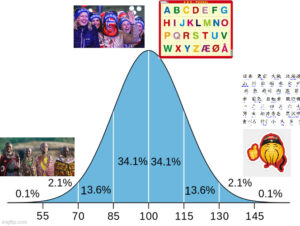Rind, Bruce, and Richard Yuill. “Hebephilia as Mental Disorder? A Historical, Cross-Cultural, Sociological, Cross-Species, Non-Clinical Empirical, and Evolutionary Review.” Archives of sexual behavior (2012): 1-33.
Abstract
Blanchardetal. (2009)demonstratedthathebephiliais
a genuine sexual preference, but then proposed,without argument
or evidence, that it should be designated as amental disorder in the
DSM-5.Aseries ofLetters-to-the-Editor criticized this proposal as
a non sequitur. Blanchard (2009), in rebuttal, reaffirmed his posi-
tion, butwithout adequately addressing some central criticisms. In
thisarticle,weexaminehebephilia-as-disorder infulldetail.Unlike
Blanchardetal.,wediscussdefinitionsofmentaldisorder,examine
extensive evidence from a broad range of sources, and consider
alternative (i.e.,non-pathological) explanations forhebephilia.We
employedWakefield’s (1992b) harmful dysfunction approach to
disorder, which holds that a condition only counts as a disorder
when it is a failure of a naturally selectedmechanismto function as
designed, which is harmful to the individual in the current envi-
ronment. We also considered a harmful-for-others approach to
disorder (Bru ¨lde, 2007). Examination of historical, cross-cultural,
sociological, cross-species, non-clinical empirical, and evolution-
ary evidence and perspectives indicated that hebephilic interest is
an evolved capacity and hebephilic preference an expectable dis-
tributional variant, both of whichwere adaptively neutral or func-
tional, not dysfunctional, in earlier human environments. Hebe-
philia’s conflict with modern society makes it an evolutionary
mismatch,notagenuinedisorder.Thoughitshouldnotbeclassified
as a disorder, it could be entered in theDSM’s5-code section, used
for non-disordered conditions that create significant problems in
present-day society.
a genuine sexual preference, but then proposed,without argument
or evidence, that it should be designated as amental disorder in the
DSM-5.Aseries ofLetters-to-the-Editor criticized this proposal as
a non sequitur. Blanchard (2009), in rebuttal, reaffirmed his posi-
tion, butwithout adequately addressing some central criticisms. In
thisarticle,weexaminehebephilia-as-disorder infulldetail.Unlike
Blanchardetal.,wediscussdefinitionsofmentaldisorder,examine
extensive evidence from a broad range of sources, and consider
alternative (i.e.,non-pathological) explanations forhebephilia.We
employedWakefield’s (1992b) harmful dysfunction approach to
disorder, which holds that a condition only counts as a disorder
when it is a failure of a naturally selectedmechanismto function as
designed, which is harmful to the individual in the current envi-
ronment. We also considered a harmful-for-others approach to
disorder (Bru ¨lde, 2007). Examination of historical, cross-cultural,
sociological, cross-species, non-clinical empirical, and evolution-
ary evidence and perspectives indicated that hebephilic interest is
an evolved capacity and hebephilic preference an expectable dis-
tributional variant, both of whichwere adaptively neutral or func-
tional, not dysfunctional, in earlier human environments. Hebe-
philia’s conflict with modern society makes it an evolutionary
mismatch,notagenuinedisorder.Thoughitshouldnotbeclassified
as a disorder, it could be entered in theDSM’s5-code section, used
for non-disordered conditions that create significant problems in
present-day society.
Keywords Hebephilia Mental disorder Harmful dysfunction DSM-5
